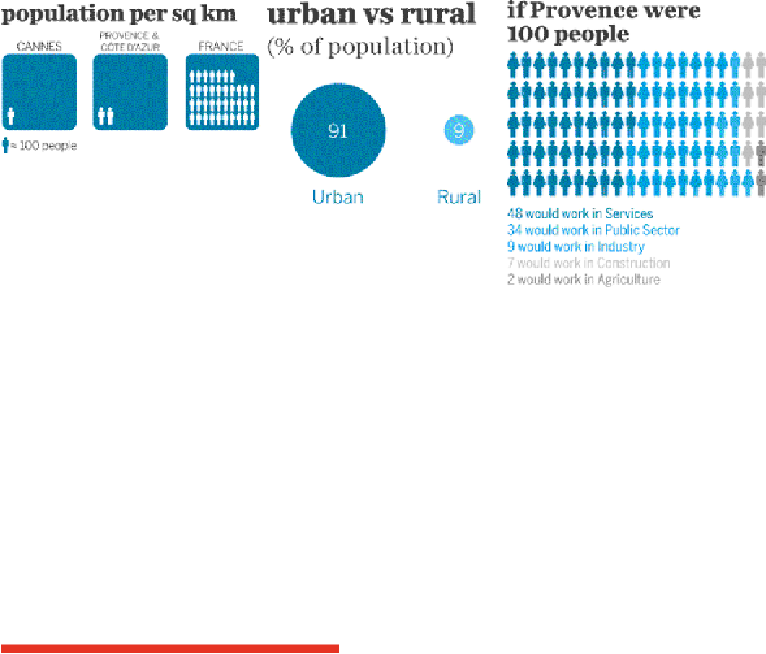Travel Reference
In-Depth Information
Provence & the Côte d'Azur Today
A Dynamic Region
Provence-Côte d'Azur has always been one of France's economic dynamos. Between 1962
and 1990, it was the country's fastest growing region and its population grew 75%. Al-
though it has lost its leading spot to other regions over the last couple of decades, it still
outperforms the national average for economic growth.
The global downturn has taken its toll - un-
employment has risen since 2008 - but a num-
ber of large-scale projects means the region re-
mains bullish about its prospects: a new high-
speed railway line (slated for 2023) is expected
to cut transport time between Paris and Nice
from five hours and 40 minutes to just four
hours; the EuroMéditerranée project in Mar-
seille is breathing new life into the port and
dockland area; and Nice has launched a massive regeneration project called Eco-Vallée de
la Plaine du Var (west of the city), complete with transport hub, stadium, environmentally
friendly housing and a technopole focused on sustainable development. The project, which
should be completed by 2018, will generate thousands of jobs and has received state sup-
port.
Provence-Côte d'Azur is defined in administrative
terms as the Provence-Alpes-Côte d'Azur
région
,
which is split in six
départements
: Vaucluse
(Avignon), Bouches du Rhône (Marseille), Var (St-
Tropez), Alpes Maritimes (Nice), Alpes de Haute
Provence (Gorges du Verdon) and Hautes Alpes.



